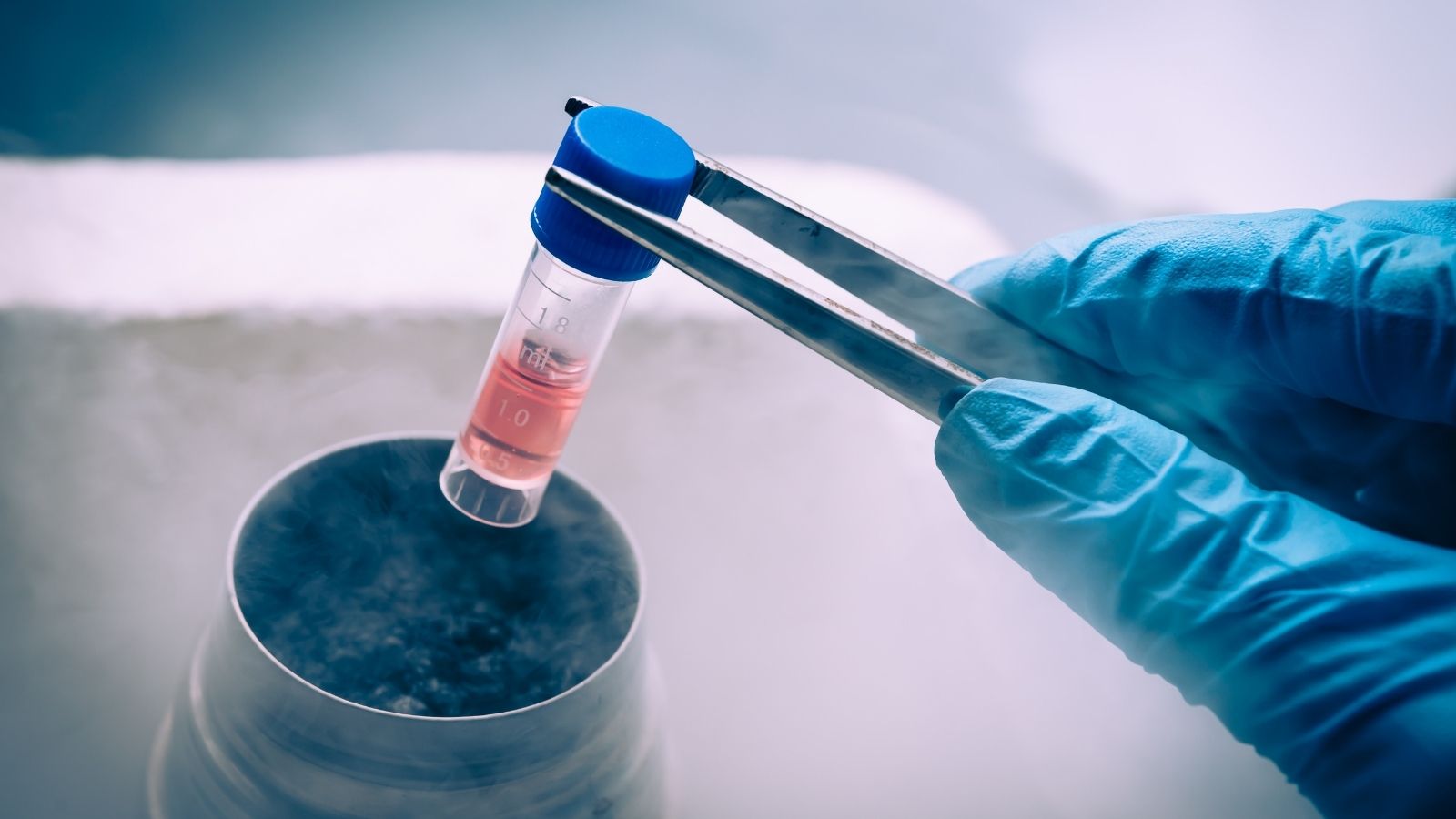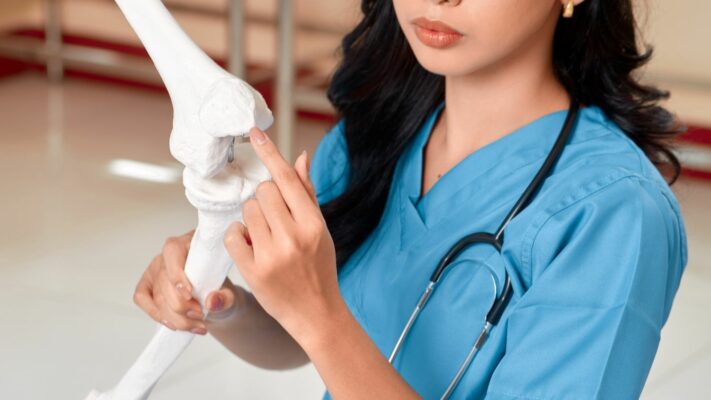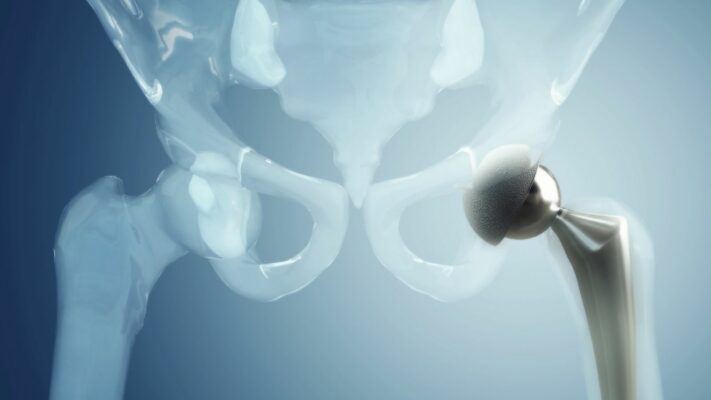Prof. Dr. Murat Demirel, one of the best orthopedic doctors performing stem cell therapy in Ankara, is known for his innovative and scientific approaches in joint arthritis, cartilage damage, tendon injuries, and sports injuries. Stem cell therapy is an advanced treatment method in which highly regenerative cells derived from the patient’s own tissue are applied to the damaged area, supporting the tissue’s natural healing process. Among hospitals in Ankara offering stem cell therapy, Prof. Dr. Demirel provides services in centers equipped with modern medical infrastructure and high hygiene standards, offering each patient a personalized treatment plan.
During the treatment process, Prof. Dr. Demirel provides detailed information to his patients and ensures a fast and safe recovery with post-stem cell therapy medical advice. By offering transparent information about stem cell therapy prices in Ankara, he helps patients make well-informed decisions. You can also protect your joint health, increase your mobility, and improve your quality of life by contacting us and requesting an appointment today.
| Treatment Name | Stem Cell Therapy |
| Application Area | Joint cartilage, meniscus, tendon, ligaments, bone healing |
| Usage Purposes | Osteoarthritis (especially knee), cartilage defect, meniscus tear, tendinopathy, fracture healing disorders |
| Application Method | Injection of stem cells obtained from bone marrow aspiration or adipose tissue into the target area after centrifugation |
| Type of Anesthesia | Local or sedation |
| Mechanism of Action | Stem cells secrete growth factors and bioactive molecules that support regeneration in damaged tissue |
| Suitable Patient Profile | Patients with moderate joint arthritis, not suitable for surgery, young and active individuals |
| Complications | Temporary pain and swelling at the injection site; infection risk is rare |
| Recovery Process | Clinical improvement may be seen within 2–6 weeks; effect may last up to 6–12 months |
| Number of Sessions | Usually 1 session; may be repeated in some cases |
| Alternative Methods | PRP, hyaluronic acid, physical therapy, surgery (osteotomy, prosthesis) |
| Follow-Up Process | Monitoring with clinical and imaging methods, may be supported with physical therapy |


Prof. Dr. Murat Demirel
Orthopedics and Traumatology Specialist
Orthopedics Specialist Prof. Dr. Murat Demirel was born in Ankara in 1974. He completed his primary education at Ankara Kavaklıdere Primary School and his secondary and high school education at Ankara Atatürk Anatolian High School. Dr. Demirel graduated from Ankara University Faculty of Medicine in 1998 and completed his residency in Orthopedics and Traumatology at Ankara Numune Training and Research Hospital, 1st Orthopedics and Traumatology Clinic, in 2004.
PhD
Ankara University Institute of Health Sciences
Specialization
Ankara Numune Training and Research Hospital, 1st Orthopedics Clinic
Medical School
Ankara University Faculty of Medicine
Yazı İçeriği
What is Stem Cell Application in Orthopedic Problems and How Does It Work?
Let’s imagine our body as a city that is constantly working and renewing itself. In this city, there are roads (blood vessels), buildings (organs), and infrastructure (bones and joints). Over time, accidents (injuries) or wear and tear (aging, arthritis) cause damage to the infrastructure. Stem cells are the skilled and specialized repair team of this city, capable of handling every kind of repair job.
These special cells are the “master” cells of our body. They have two main superpowers that set them apart from other cells. First, they can transform into any type of specialist needed. For example, if there is cartilage damage in a joint, they can become cartilage cells; if there is a fracture in bone, they can become bone cells. Second, they can copy themselves and multiply. This ensures that the repair team never runs out.
So, how does this repair team work when a stem cell application is performed? In the past, it was thought that the injected cells directly replaced the damaged tissue. However, we now know that their role is much broader and smarter. They act like “conductors of an orchestra.” When they reach the damaged area, their first task is to analyze the environment. Then, by releasing special signaling molecules and growth factors, they initiate a large-scale repair operation. The steps of this operation usually include:
Soothing: They suppress excessive inflammation at the injury site. This reduces pain and creates a calm environment for healing to begin.
Calling for Help: They summon the body’s natural repair cells and other stem cells to the area.
Delegating Tasks: They instruct incoming cells on what to do. By promoting new blood vessel formation, they improve blood supply and nutrition to the area.
Supporting Construction: They increase the production of essential building materials such as collagen, needed for tissue reconstruction.
Thus, stem cell therapy is not just a filling procedure that closes gaps, but a biological stimulation treatment that triggers, organizes, and strengthens the body’s own healing intelligence. For this reason, it stands out as a valuable option in many orthopedic cases where surgery is not yet necessary or surgery is to be postponed.
Which Cells Are Used for a Stem Cell Application and What Are Their Features?
When we talk about stem cell therapy in orthopedics, we almost always refer to a specific type of cell: Mesenchymal Stem Cells, or MSCs for short. These cells are very special cells found in the bodies of adult individuals, with the potential to transform into musculoskeletal tissues. Their key properties make them extremely valuable in treatments.
Some prominent abilities of MSCs include:
Multipotent Differentiation: They can transform into various tissue cells such as bone, cartilage, muscle, fat, and tendon. This gives them a “Swiss army knife” functionality.
Communication Expertise: They are in constant communication with surrounding tissues through the signaling molecules they release (paracrine effect). This allows them to regulate the healing process.
Immune Modulation: They can modulate the body’s immune responses. This is especially beneficial in inflammatory conditions such as arthritis, preventing excessive reactions and reducing the risk of rejection.
Self-Renewal: When they divide, they produce both another stem cell and a progenitor cell that will differentiate, ensuring they never run out.
The quality and number of mesenchymal stem cells used in treatment may vary depending on the source and the patient’s age. As age advances, stem cells, like all cells in the body, slow down and their regenerative capacity decreases. Therefore, factors such as the patient’s age and the source of cells are carefully considered when planning treatment.
From Which Areas of the Body Are These Valuable Cells Collected for Stem Cell Application?
Although mesenchymal stem cells are present in many tissues of the body, in orthopedic treatments we usually benefit from two main sources because they are practical, safe, and effective. Sometimes a third option may also be considered.
The most commonly used sources are:
Adipose Tissue: This is one of the richest and most popular sources of stem cells today. Abdominal or waist fat contains a much higher concentration of stem cells compared to bone marrow. Moreover, harvesting cells from fat tissue (mini-liposuction) is usually more comfortable. One of its biggest advantages is that the number and quality of stem cells in adipose tissue does not decrease significantly with age. This makes it an excellent option for elderly patients.
Bone Marrow: This is the classic source where stem cells were first discovered. It has a high potential to transform into bone and cartilage tissue. Usually collected from the back of the pelvic bone (hip) under local anesthesia with a simple needle. Although the procedure is short, it can be slightly less comfortable compared to fat harvesting. The number of stem cells in bone marrow tends to decrease with age.
Umbilical Cord: This source is obtained from the umbilical cord tissue or blood during birth. These cells are very young, dynamic, and have strong proliferation capacity. Since their potential to stimulate the immune system is very low, they are suitable for transplantation to others (allogeneic). They are a valuable alternative when the patient’s own cells are insufficient or cannot be used.
The choice of source is determined individually based on the patient’s age, general health condition, and the nature of the orthopedic problem. Each source has its own advantages, and the best decision is made by the physician evaluating the patient.
Contact us for detailed information and an appointment!
In Which Orthopedic Conditions Can Stem Cell Therapy Be a Treatment Option?
Stem cell therapy is not a “magic wand” that cures everything, but in certain orthopedic conditions, it is a powerful treatment option to accelerate healing, reduce pain, and restore function. It can be used as the last step before surgery or as a supportive treatment to surgery.
Some of the conditions where stem cell therapy is frequently considered include:
- Knee osteoarthritis
- Hip osteoarthritis
- Shoulder osteoarthritis and impingement syndromes
- Ankle osteoarthritis
- Localized cartilage damage and injuries
- Meniscus tears (especially degenerative ones)
- Shoulder muscle (rotator cuff) tendinitis or partial tears
- Tennis and golfer’s elbow (epicondylitis)
- Achilles tendinitis and other tendinopathies
- Partial ligament injuries (e.g., anterior cruciate ligament)
- Non-healing or delayed-healing fractures
- Avascular necrosis of the hip bone (circulatory disorder)
The common features of these conditions are usually tissue degeneration, chronic inflammation, and slow healing processes. Stem cells act by creating a biological response specifically against these problems. The best results are achieved especially in cases that are not too advanced — when there is no complete collapse of the joint or total rupture of the tissue. The goal of treatment is to stop or slow the progression and give the body a chance to repair itself.
How Is Stem Cell Therapy Performed Step by Step?
Patients often think that stem cell therapy is a complex and lengthy surgery, but in reality, the process is quite simple and is usually completed as a same-day office procedure. The procedure consists of three basic steps:
Cell Collection (Harvesting): The first step is to collect tissue rich in stem cells from the patient’s own body. This is done under local anesthesia to ensure it is completely painless. If adipose tissue is used, a mini-liposuction procedure lasting about 15–20 minutes is performed from the abdominal area. If bone marrow is preferred, a sample is taken from the hip bone in a 10–15 minute procedure. The patient does not feel any pain during this time.
Cell Separation and Concentration: The collected tissue is placed in a special closed system centrifuge device. This device separates the tissue into its components. While unwanted parts such as red blood cells and plasma are removed, a small but powerful concentrate containing millions of stem cells and growth factors is obtained. This step takes about 20 minutes, during which the patient rests.
Injection: The prepared valuable stem cell concentrate is injected into the damaged area to be treated. Since accurate delivery of the injection to the correct anatomical site is critical for success, this step is almost always performed under imaging guidance. Typically, ultrasound is used to clearly visualize the damaged tendon, ligament, or joint space, and the injection is performed with millimetric precision.
The entire process, from entering the clinic to leaving, usually takes 1 to 1.5 hours. It does not require hospitalization, and patients can walk home after the procedure.
Who Is Suitable for Stem Cell Therapy, and Who Is Not?
As with any medical treatment, the most important step in stem cell therapy is correct patient selection. While this treatment can provide excellent results for patients who meet specific criteria, it may not be a suitable option in some cases.
Patients Generally Suitable for Stem Cell Therapy:
- Those who have tried non-surgical treatments (medications, physical therapy, cortisone injections, etc.) but have not had sufficient results.
- Patients with chronic pain such as osteoarthritis who do not want surgery or are too young for surgery.
- Individuals whose general health condition makes surgery risky.
- Patients with slow-healing soft tissue problems such as worn tendons, partial muscle or ligament tears.
- Those with realistic expectations and willing to actively participate in the necessary rehabilitation process after treatment.
Situations Where Stem Cell Therapy Is Not Recommended (Contraindications):
- Presence of an active infection in the body or at the injection site.
- Active cancers involving blood or bone marrow, such as leukemia or lymphoma.
- Certain cancers within the last 5 years, even if treated.
- Severe bleeding disorders preventing blood clotting.
- Uncontrolled and active autoimmune diseases such as rheumatoid arthritis.
- Pregnancy or breastfeeding period.
- Advanced-stage conditions where cartilage is completely lost, known as “bone-on-bone.”
Are There Risks or Side Effects of Stem Cell Therapy?
As with any medical procedure involving injections, stem cell therapy also carries potential risks and side effects. However, one of the greatest advantages of this treatment is that, especially when using the patient’s own (autologous) cells, these risks are very low and the side effects are generally mild and temporary.
Common and Temporary Side Effects:
- Mild to moderate pain at the injection site.
- Swelling or fullness sensation in the area.
- Tenderness or mild bruising.
These complaints are the body’s natural response to the injection and usually peak within the first 48–72 hours, then quickly decrease. They can be managed with simple painkillers (non-anti-inflammatory, as recommended by the doctor) and ice application.
Rare Possible Risks:
Serious complications are very rare, but should still be known:
Infection: Despite sterile conditions, there is always a theoretical risk of infection in any procedure involving skin penetration. This risk is far below 1%.
Bleeding: Small bleeding may occur at the injection site.
Allergic Reaction: Since the patient’s own cells are used, there is no risk of allergic reaction or rejection.
Excessive Pain: Rarely, some patients may have a stronger reaction after the procedure, but this is manageable.
What Is the Recovery Process and Rehabilitation After Stem Cell Therapy?
The period after a stem cell injection is as critical as the injection itself. For the injected cells to perform their task effectively, they must be given the right environment and time. This process requires patience and active participation.
General Phases of the Recovery Process:
First Phase: Protection and Rest (First 2 Weeks)
- The goal is to allow stem cells to adapt to the tissue and start the healing process.
- In the first 2–3 days, ice application and rest are recommended for the treated area.
- Activities that put excessive strain on the joint should be avoided.
The Most Important Rule: Anti-inflammatory (NSAID) drugs such as ibuprofen and naproxen must not be used, as they disrupt the natural repair mechanisms stem cells rely on.
Second Phase: Gradual Movement and Strengthening (Weeks 2–8)
- A physical therapy program begins during this period and is an integral part of treatment.
- Gentle exercises under the supervision of a physiotherapist to maintain and increase joint range of motion.
- Isometric and light resistance exercises to strengthen the muscles around the treated area.
- Low-impact cardio activities such as swimming or cycling are recommended.
Third Phase: Return to Function and Sports (Week 8 and Beyond)
- As the patient’s pain decreases and muscle strength improves, daily activity levels and exercise intensity are gradually increased.
- More challenging strengthening exercises are added to the program.
- Return to higher-impact sports such as running and jumping is usually planned after the 3rd month, gradually and under doctor and physiotherapist supervision.
Why Is Rehabilitation So Important?
Stem cells lay the biological foundation for repair, but for the repaired tissue to become strong, flexible, and functional, proper rehabilitation is essential. Physical therapy ensures the joint “re-learns” correct movement, corrects muscle imbalances, and reduces the risk of re-injury. Strict adherence to the treatment protocol and physical therapy program directly affects the quality and durability of the outcome.
Contact us for detailed information and an appointment!
Frequently Asked Questions
Is stem cell therapy effective for knee pain?
Yes, especially in the early and mid-stages of knee osteoarthritis, stem cell therapy can provide quite promising results. This treatment aims to stimulate the repair of damaged cartilage tissue, reduce pain, and improve joint function. By utilizing the body’s own healing potential, it delivers “repair” cells to the worn-out tissue, providing a kind of rejuvenation. Its success is more limited in advanced cases.
Can stem cell therapy be applied to the hip bone?
Absolutely. It is especially used in the early stages of a condition called “avascular necrosis,” where the blood supply to the hip bone is impaired, causing the bone to lose vitality. The goal is to stimulate new blood vessel formation and prevent bone collapse. Stem cells taken from your own adipose tissue or bone marrow are injected into the damaged area, revitalizing the bone.
Is PRP used in the treatment of shoulder muscle tears?
Yes, PRP (Platelet-Rich Plasma) therapy is a method we frequently use, especially in partial (not full-thickness) shoulder muscle tears and tendon injuries. Prepared from your own blood and rich in healing factors, this plasma is injected into the tear site to accelerate tissue repair and reduce pain. It can be used as an alternative to surgery or as a supportive treatment after surgery.
What is stem cell therapy used for in orthopedics?
In orthopedics, we use stem cells to activate the body’s natural repair mechanisms. The main uses include osteoarthritis (knee, hip, shoulder), non-healing or delayed-healing fractures, muscle and tendon injuries, cartilage damage, and bone circulation disorders such as avascular necrosis of the hip. This treatment is a biological approach that helps damaged tissue regenerate itself.
How is stem cell therapy applied to the legs?
By “legs,” we usually mean the knee or hip joint. The procedure is quite simple. A small amount of tissue is taken from your abdominal fat tissue or pelvic bone (bone marrow) under local anesthesia. This tissue is processed in special devices to obtain a fluid rich in stem cells. Then, this valuable fluid is injected into the problematic joint, such as your knee or hip, through a simple injection. The procedure is completed on the same day.




